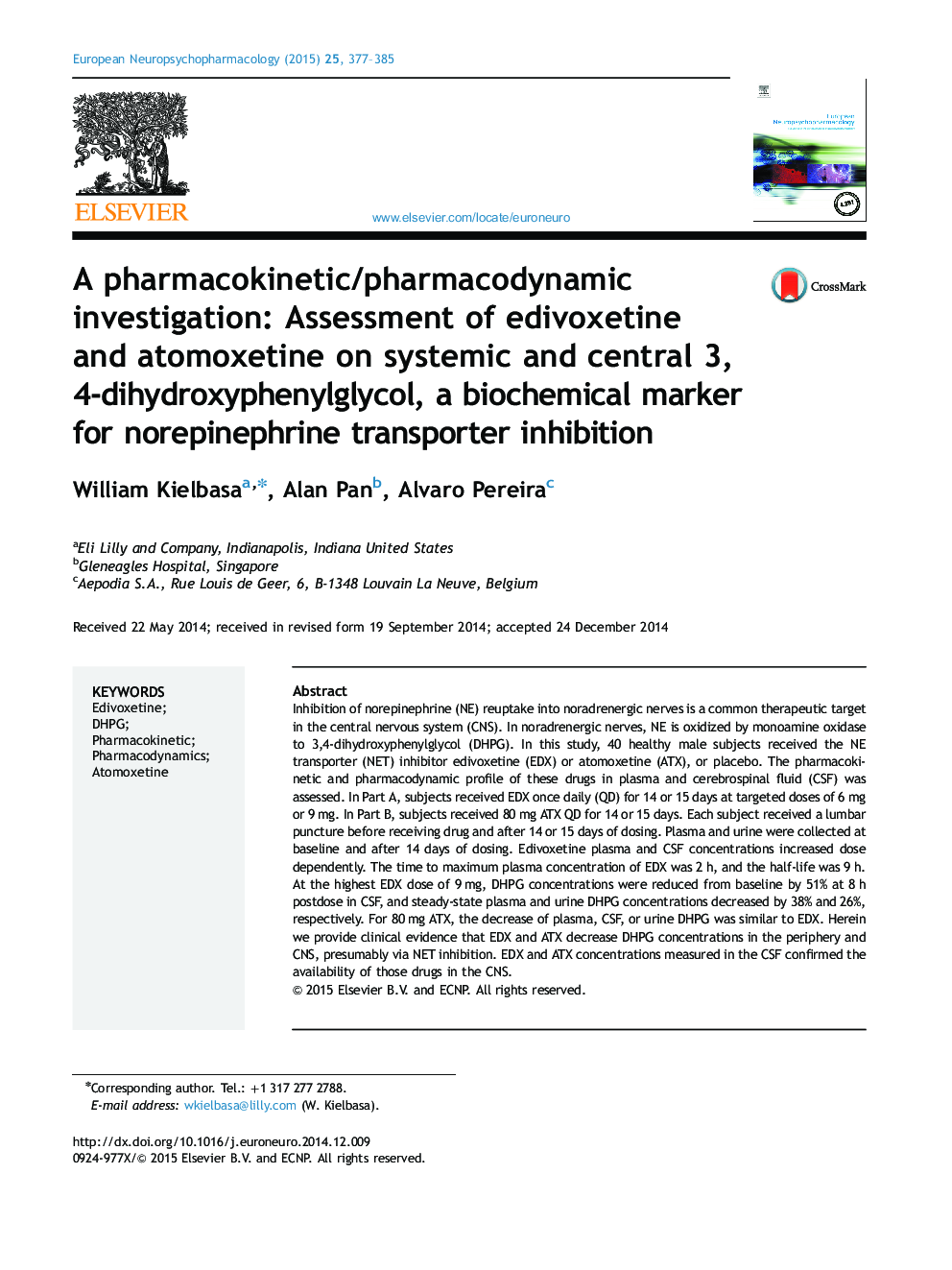| Article ID | Journal | Published Year | Pages | File Type |
|---|---|---|---|---|
| 10299098 | European Neuropsychopharmacology | 2015 | 9 Pages |
Abstract
Inhibition of norepinephrine (NE) reuptake into noradrenergic nerves is a common therapeutic target in the central nervous system (CNS). In noradrenergic nerves, NE is oxidized by monoamine oxidase to 3,4-dihydroxyphenylglycol (DHPG). In this study, 40 healthy male subjects received the NE transporter (NET) inhibitor edivoxetine (EDX) or atomoxetine (ATX), or placebo. The pharmacokinetic and pharmacodynamic profile of these drugs in plasma and cerebrospinal fluid (CSF) was assessed. In Part A, subjects received EDX once daily (QD) for 14 or 15 days at targeted doses of 6Â mg or 9Â mg. In Part B, subjects received 80Â mg ATX QD for 14 or 15 days. Each subject received a lumbar puncture before receiving drug and after 14 or 15 days of dosing. Plasma and urine were collected at baseline and after 14 days of dosing. Edivoxetine plasma and CSF concentrations increased dose dependently. The time to maximum plasma concentration of EDX was 2Â h, and the half-life was 9Â h. At the highest EDX dose of 9Â mg, DHPG concentrations were reduced from baseline by 51% at 8Â h postdose in CSF, and steady-state plasma and urine DHPG concentrations decreased by 38% and 26%, respectively. For 80Â mg ATX, the decrease of plasma, CSF, or urine DHPG was similar to EDX. Herein we provide clinical evidence that EDX and ATX decrease DHPG concentrations in the periphery and CNS, presumably via NET inhibition. EDX and ATX concentrations measured in the CSF confirmed the availability of those drugs in the CNS.
Related Topics
Life Sciences
Neuroscience
Biological Psychiatry
Authors
William Kielbasa, Alan Pan, Alvaro Pereira,
